As a small boy thrashing an open 3-meter dinghy in the icy and inhospitable waters of southern Tasmania, I did not realize that this “punishment” would later be the instrument of my meeting, and intimate and friendly ambiance, with the world’s greatest king – His Majesty King Bhumibhol Adulyadej.
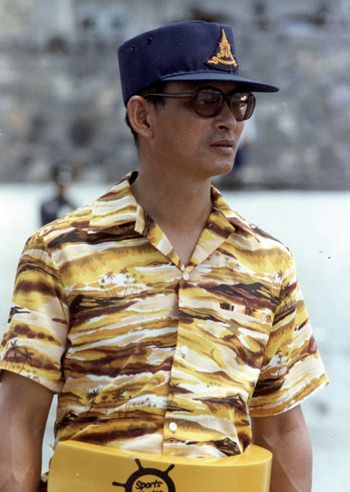
Some four decades and four continents later, this came about, when I was invited by His Majesty to go sailing off the Klai Klang Won Palace in Hua Hin. The boat was different to my little dinghy, the waters were 20C warmer and the environment was world class.
I sailed competitively with the King on that occasion and, up-close during the outing, I observed his mastery of the elements – the wind shifts, the currents and the weather. This same knowledge he imbued in his development of Thailand, sheltering his people from the vagaries of nature, floods and the ebb and flow of the political tides around them.
It was indeed, a highlight of my life, to be in close association with the revered monarch of the Thai people and although I no longer sail, every time I visit the shoreline I still remember the wonderful days that I was privileged to be with the King.
The following story charts His Majesty’s dedication to sailing, the sea and maritime environment and is my attempt to recall the most cherished moments of my years in the Thailand, when I spent some precious time with Their Majesties, via the sailing world.
The 1950s-1960s: Sailing thrives
Affinity to the sea has always been a trait of the Thai people – understandably so, as the Kingdom is blessed with a beautiful littoral, marvellous beaches, warm waters and gentle thermals – not forgetting the generous nature of the local people – which are still the great attractions of the Kingdom.
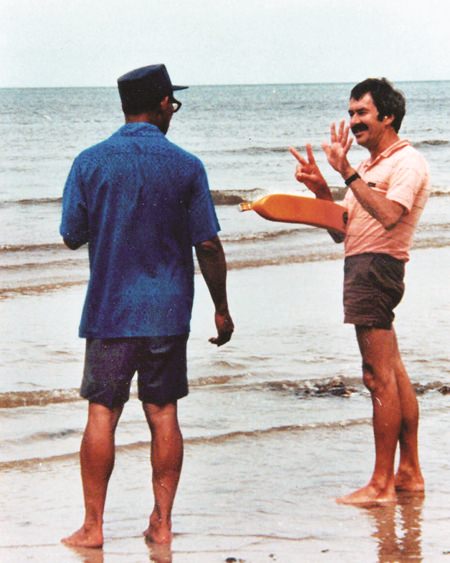
The King, Queen and members of the Royal Family had some notable sojourns in South Pattaya in the 1950s-1960s and, often, there were gatherings of visiting royals, such as the future Queen of Denmark – then a Princess – and Thai “blue bloods” to share the fun and the sailing. Such sailing greats as Prince Birabongse Bhanubandh and Dr Rachot Kanjanavanit were frequently present.
After the founding of the Varuna Marine Club in South Pattaya in July 1957, there were many gatherings on the South Pattaya foreshore. One memorable event was in April 1965, when the British Royal Consort Prince Philip joined a race from Pattaya to Koh Larn and back. Prince Philip, a Dragon class sailor of Olympic standards, was not exactly covered in glory this day and his placing in the 23-strong fleet was not well publicized.
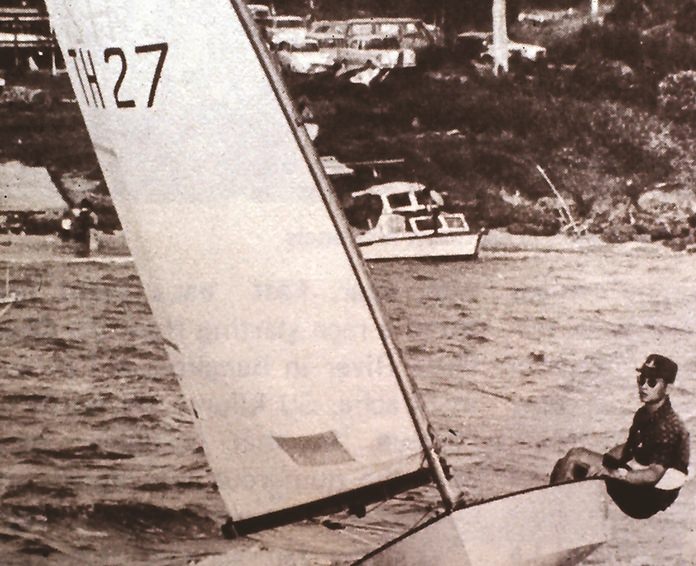
Prince Bhisadej, the King’s long-time associate and one of the dedicated promoters of sailing, liked to remind everyone that his wife, MR Datchatee, sailed with Prince Philip on that fateful occasion!
One other of the group assembled on the Pattaya foreshore was H.E. Sebastiao de Castello-Branco, the then Portuguese Ambassador to Thailand who noted that, “While the race was not exactly an Olympian qualifying trial, a great picnic on Koh Larn and the later banquet at the Marine Club, hosted by Their Majesties, were ample rewards for the day’s outing.”
Prince Philip was so delighted, regardless of his poor placing that, upon return to the UK, he despatched a wooden catamaran as a gift to the King. It was the first “Cat” in Thailand where there are now a myriad of types and styles, built here in the Kingdom – no more wooden ones, but built with sophisticated fibreglass, carbon fibres and aluminium.
Apart from this famous race, which has become an annual long-distance event in the Gulf, now known as the “Three Islands Race”, the event is still held and joins many other such challenges, contributing to the “sailing golden era of the 1950s and 1960s.”
Several other highlights relate to the sailing folklore formed during these decades and are now essentially part of Thailand’s sailing history. For example, the King’s Trans-Gulf crossing solo in his OK dinghy, and the King and eldest daughter Princess Ubolratana sharing a gold medal in the 4th South East Asia Peninsular Games (now the SEA Games) are celebrated annually, even some half a century later.
The King also established a dinghy club, the Royal Chitrlada Yacht Squadron at the Klai Kangwol Palace at Hua Hin and bestowed his Royal Patronage on the Varuna Marine Club, which in July 1957 became known as the Royal Varuna Yacht Club, the Kingdom’s biggest and most active.
Somehow, during these decades, the King also found time to build some more dinghies and designed the “Mod”, a small, light version of the International Moth class, very suitable for the generally light-framed Thai sailors. The craft was used as a class of its own in successive SEA Games.
Gold medal helmsman
On December 16, 1967, world sporting history was established right here in Pattaya and it was an event that probably will never be equalled – anywhere. Later on the same day, at the National Stadium in Bangkok, His Majesty the King and his eldest daughter, Princess Ubolratana mounted the winners’ podium to receive gold medals from Her Majesty Queen Sirikit.
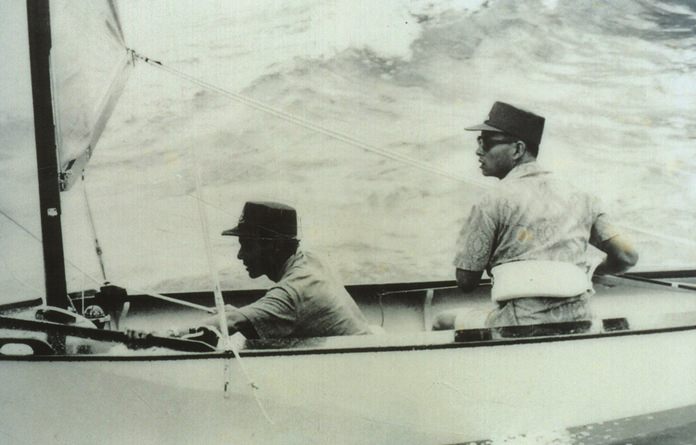
It was the Awards Ceremony of the 4th South East Asia Peninsular (SEAP) Games. King Bhumibol, racing OK dinghy number 27, and his eldest daughter Princess Ubolratana, sailing dinghy no. 18, finished equal first in the OK Dinghy division of those Games.
The King had been disqualified in the third race for a minor infraction and in true sporting spirit he retired from that race, moving the Princess up a step on the standings. It was only in the last race, where the Princess, trailing father, with the late Dr Rachot Kanjanavanit in the lead, made some quick manoeuvres on the last beat to the finishing line. Although the petite Princess was overwhelmed by the strong north-easterly prevailing in Pattaya Bay, she used guile and an experience far in excess of her tender 15 years to win this last race. By tacking on wind-shifts the Princess crossed the fleet to finish first and equal on points with the King, who still trailed Rachot, in third place.
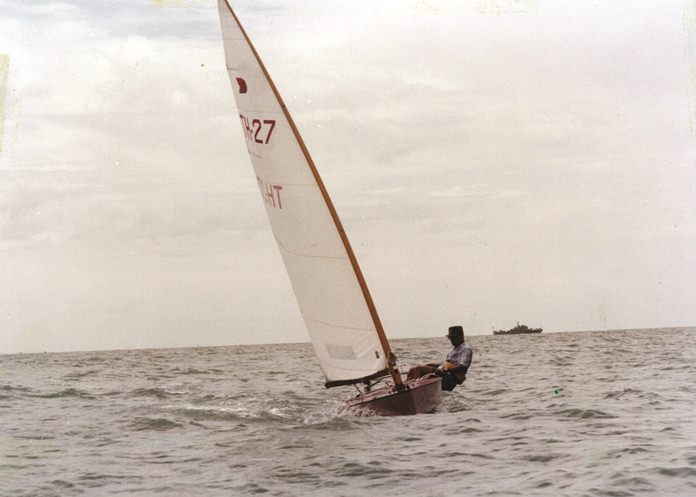
When a father and daughter finish equal first in an international yachting competition, it is history. But when the equal winners are a King and his daughter, a princess, it is immortal. That day, December 16, almost a half-century ago, was enshrined as Thailand’s National Sports Day, in honour of the occasion.
One other famous father/daughter sailing team was the Elvstroms who sailed the most difficult “Flying Dutchman” Class (the Elvstroms were Danish!) to a third placing in the Melbourne Olympics, in 1956.
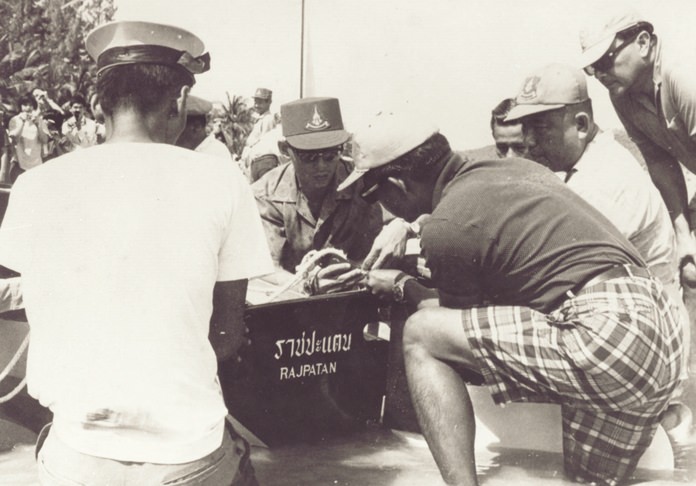
The founding of the Varuna Marine Club on 1 July 1957 – now known as the Royal Varuna Yacht Club – was also to have a great impact on yacht racing, sailing, and later, other marine-related activities in Thailand from the 1960s onwards.
With Walter Meyer as the Marine Club’s first Flag Commodore (known then as Chairman of the Board) and Prince Bhisadej in charge of the sailing programmes, the Varuna Marine Club opened at a beautiful seaside villa “in a Pattaya,” recalled Walter, “of about 20 fisher-folk and a beautiful, sparkling marine environment.”
Walter’s memory of those halcyon days – and nights – was vivid. How could the ‘Chairman of the Board’ ever forget that he had to borrow two thousand baht from his wife to pay the rent for the new club?
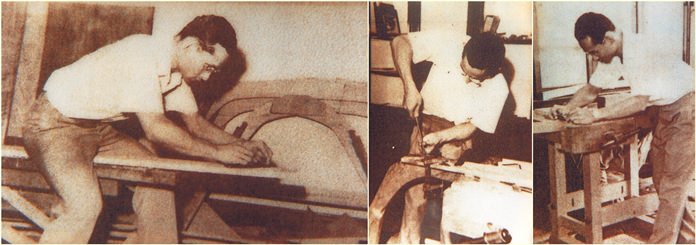
When His Majesty the King bestowed Royal Patronage in April, 1965, the Varuna Marine Club became the Royal Varuna Yacht Club. At the same time, His Majesty established the Royal Chitrlada Yacht Squadron at the Klai Kangwol Palace, Hua Hin, which is still the home for some 100 OK dinghies of the King’s own fleet.
The late 1950s and the 1960s were the golden age of yachting, with the Royal Family and other Thai and visiting Royals, ambassadors and various luminaries all taking an active part in the racing programmes and the festivities, principally around the Varuna Club at South Pattaya.
His Majesty became a frequent and enthusiastic helmsman around the South Pattaya waters – as well as at his own dinghy club at Hua Hin – sailing his Enterprise dinghy the Rajpatan with Prince Bhisadej as crew and chief tactician.
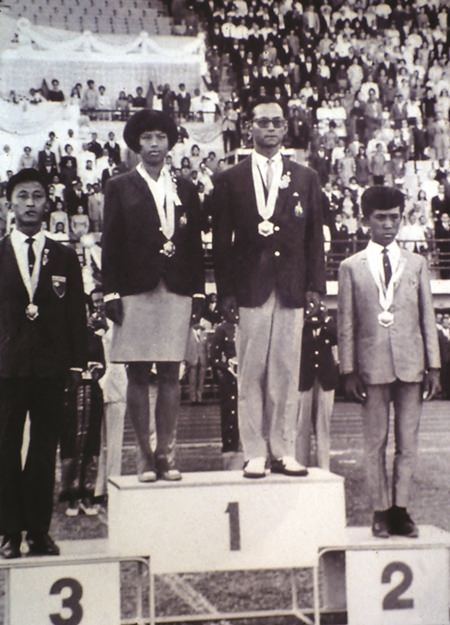
It was Prince Bhisadej, an excellent and experienced sailor himself, who introduced the King to – and tutored him in – the intricacies of dinghy sailing, recalling how quickly his ‘protégé’ learned.
When at university in the UK earlier, the Prince realized that the cold, restricting rivers and waterways around Cambridge were no match for his own beloved Gulf of Thailand – the warmth, gentle breeze and huge expanses of water. So, upon return, he started sailing an old “Snipe” (then Olympic Games single-hander), a heavy, teak craft which leaked and capsized often and, now, is probably serving as a dinner table somewhere, because of the beautiful teak-wood used in its construction.
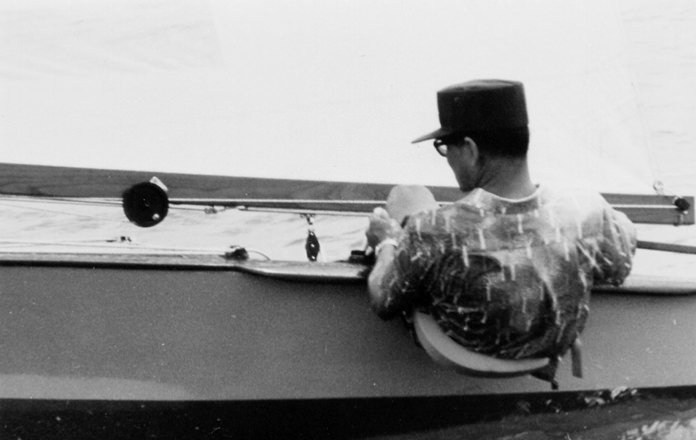
So, he built a “Heron” class car-topper and was sailing along, in slight winds, off Hua Hin, when a strong young man sculled past him. On beaching, the rower, who was also the King of Thailand, examined the Prince’s boat and marvelled how one could be satisfied to move so slowly – especially when there was little wind. But, the King, always quick to envision situations, was already planning his first dinghy as he left the beach.
Soon, the two men were building the King’s first Enterprise, in a boatyard converted from a back room at the Chitrlada Palace, back in 1964. The King’s enthusiasm, coupled to his carpentry skills, gave much rise to the humour – and loving hard work – that pervaded the atmosphere of the boatyard.
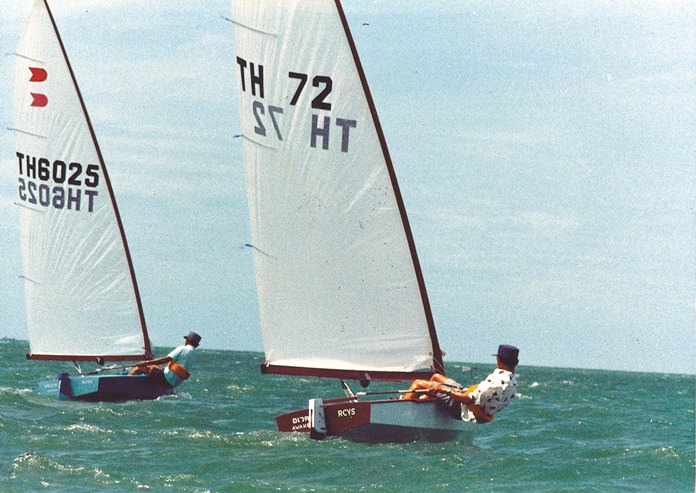
Sometimes the King arrived, ready to work on the dinghy, still dressed in an outfit he had been wearing for an official function that had been held that day.
The King hand-finished all the pieces of the dinghy, taking special care with such parts as the “king post” (a support for the deck-stepped mast) and the “king plank” (first side-strip).
It was hardly by chance, then, the boat was named Rajpatan meaning roughly “Royal Pattern”- seeing the King cut and almost “sculptured” most of the pieces himself.
As Prince Bhisadej was in charge of sailing at the Varuna Marine Club on the South Pattaya beach, he was responsible for obtaining the number for the new boat from the UK-based international association. It was so beautifully built it was “number one,” in fact. And the number allocated to the Rajpatan? E-TH 11111.
The Prince was also the King’s sailing coach. Naturally, though, as for any other novice, there were pitfalls along the way for the royal sailor. On one of their first outings on Pattaya Bay in the Rajpatan, the King was helming beautifully, preparing to undertake a gybe – a difficult enough manoeuvre at any time. Bhisadej coached the King through the steps to be followed. Nothing happened and there was no response from the helm. Bhisadej looked aft to see the King swimming strongly towards the dinghy: during the gybe, he had fallen overboard.

But there was another “naming” story to emanate from the Chitrlada Boatyard. This was when the King and Bhisadej were building His Majesty’s first OK dinghy. The King was engrossed in laying the keel, the most difficult and crucial step in building such a craft. There was an explosion outside but the King could not be distracted from his intricate task.
The two men wished each other a “Happy New Year”, for the detonation was a firework, exploded to celebrate the arrival of New Year, 1965, and they continued on with the building of the dinghy.
The King immediately seized upon the name of the embryo OK dinghy: Naowalerk, meaning roughly “auspicious event.” What could be more appropriate for a dinghy born on New Year’s Eve?”
In next week’s issue: His Majesty’s legendary solo trans-Gulf crossing and a return to competitive sailing.




